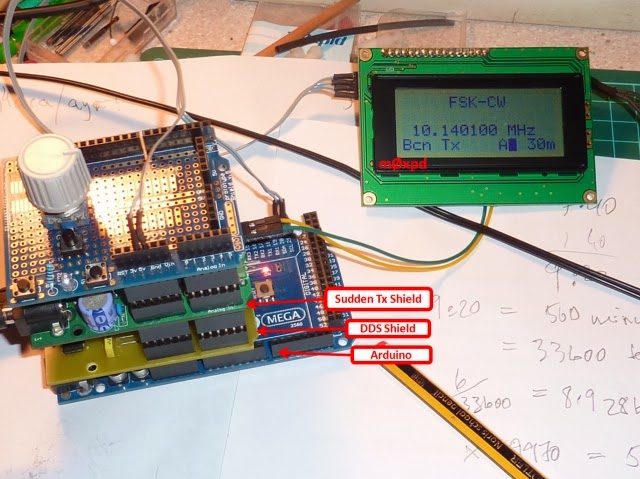Having quoted from the book in my
recent article in
SPRAT, I was pleased to spend last week in "
Five Red Herrings" country.
I was staying just outside Gatehouse of Fleet, at the
West Lodge of the Cally Estate - a beautiful place for a holiday (
although persons of a nervous disposition might find the interior decor a little overwhelming).
One day, the XYL and I decided to follow the suggestion Wullie Murdoch had given to Lord Peter in Chapter 2...
"
Ye maun tak’ the coast-road through Creetown to Newton Stewart ... and turn to the richt over the brig and then to the richt again at the signpost along the road to Bargrennan and juist follow the road till ye turn
over a wee brig on the richt-hand side over the Cree and then tak’ the richt-hand road.’
We, of course, were starting from Gatehouse rather than Kirkcudbright, but we followed the route as best we were able from there on. Words in italicized yellow are from DLS, the remainder from me.
"
(W)e passed through Gatehouse, waving a cheerful hand to the proprietor of the Anwoth Hotel...
As you see, the Anwoth is now called "The Ship Inn".
Next, we "
climbed up beneath the grim blackness of Cardoness Castle"...
Joining the west-bound A75, we "drank in for the thousandth time the strange Japanese beauty of Mossyard
Farm, set like a red jewel under its tufted trees on the blue sea’s rim"...
Mossyard now farms not just cattle and sheep but also
tourists, with cottages and lodges for rent. Its "strange Japanese Beauty" is a reference to the conspicuous stand of sycamores, visible from the main road. Unfortunately, the equally conspicuous red barn (which, I was told, explains Dorothy's "red jewel" similie) has recently been demolished.
We pressed further along the A75 to find "the Italian loveliness of Kirkdale, with its fringe of thin and twisted trees and the blue Wigtownshire coast gleaming across the bay".
Unfortunately, much of Kirkdale's Italian loveliness was obscured by typically dreich Gallovidian weather!
Behind Kirkdale (and actually before it in a strict, sequential itinerary) is "the old Border keep of Barholm, surrounded by white-washed farm buildings"
Recent renovations have seen the grim granite painted - diluting the contrast with the adjacent farm buildings.
Following the text, we drove on west, always aware of "the huge hump of Cairnsmuir rising darkly over Creetown."
Whilst we were aware of it, we couldn't see Cairnsmore at this point - the picture above was actually taken a couple of hours later from the road between Creetown and Gatehouse Station, near Falbae.
"Then the open road again, dipping and turning – the white
lodge on the left, the cloud-shadows rolling, the cottages with their roses and asters clustered against white and yellow walls; then Newton Stewart, all grey roofs huddling down to the stony bed of the Cree, its thin spires striking the sky-line. Over the bridge..."
"and away to the right by the kirkyard, and then the Bargrennan road, curling like the road to Roundabout, with the curves of the Cree glittering through the tree-stems..."
"...and the tall blossoms and bracken golden
by the wayside. Then the lodge and the long avenue of rhododendrons – then a wood of silver birch, mounting, mounting, to shut out the sunlight. Then a cluster
of stone cottages – then the bridge and the gate..."
The bridge is reached from a right turn off the A714, some 8 miles north of Newton Stewart, near a place called "Clacheneasy" and - fortunately - it is no longer gated!
We followed DLS' description of the route, climbing "the stony hill-road, winding between mounds round as the hill of the King of Elfland, green with Grass and purple with heather and various with sweeping shadows".
Just like Wimsey before us, we "pulled up as (w)e came to the second bridge"..
where we found not just The (Water of) Minnoch but - surely - the self-same point on that river where Campbell's corpse was discovered (in fiction, at least).
I had always read FIVE believing "The Minnoch" to be a product of Dorothy's imagination.
Last year, whilst holidaying in nearby Ballantrae, I discovered it is a real river.
This year, simply by following what turned out to be clear instructions in the text, I found what I am convinced is THE PLACE - a beauty spot which Dorothy surely visited as a tourist herself some 75 years ago.
Here's The Minnoch, looking upstream (i.e. North) from the "second bridge"...
The Minnoch was in glorious spate after rain the night before. There were any number of points where an artist might wish to erect an easel and from which might slip to an unfortunate accidental death - or from which (s)he might push an already dead fellow artist's corpse to simulate the same accident!
For others repeating this pilgrimage, the second bridge actually takes you across The Minnoch to the
visitor centre at Glentrool (
or, at least, a mile-or-so east of the village of Glentrool)...
We managed to park our car rather more easily than Lord Peter did, as grass verges are now supplemented by a car park, and the visitor centre provided a fine bowl of soup and pot of tea. Our "cup of happiness was full. (We were a couple) who loved simple pleasures"
...-.- de m0xpd










































